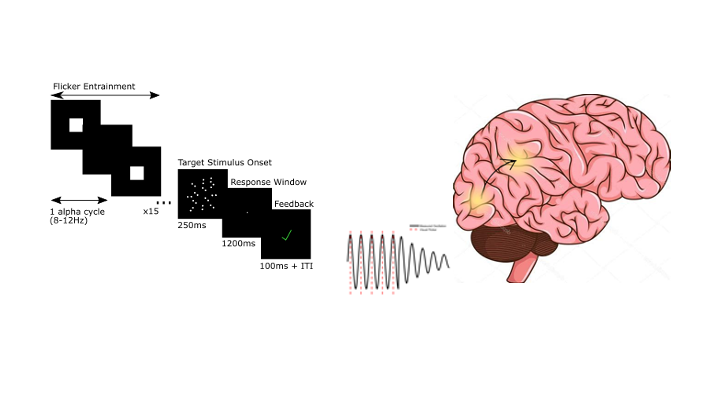How does the brain adapt to help us find objects in our messy and cluttered environment? Unlocking the mechanisms that help the visual system to sort signal from noise can form the basis for understanding how the brain learns new tasks. Previous work in the lab has highlighted the brain-wide networks that contribute to visual perceptual learning, and the changing contributions made by these circuits. To make causal inferences about the role of different neural processing stages, several recent projects have combined transcranial magnetic stimulation (TMS) with electroencephalography (EEG), to both modulate and record time-resolved brain activity. We have focused particularly in the contribution of parietal sites to making accurate perceptual judgements. In addition to TMS, we have also used a visual flicker intervention to modulate ongoing oscillatory brain activity – an important organising mechanism in the cortex. Using such methods, we aim to identify the optimal brain states for efficient learning of difficult perceptual judgements.


